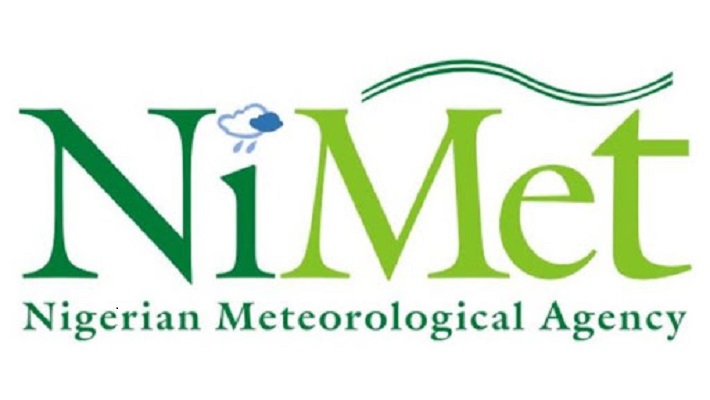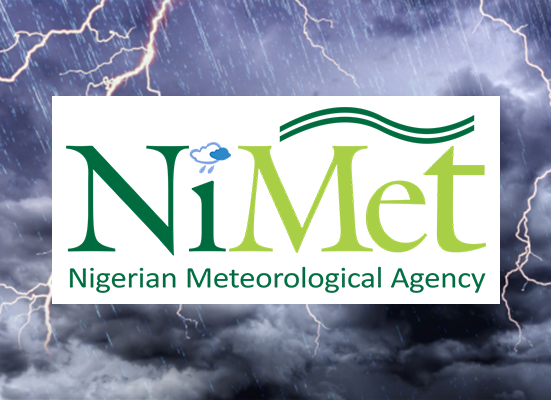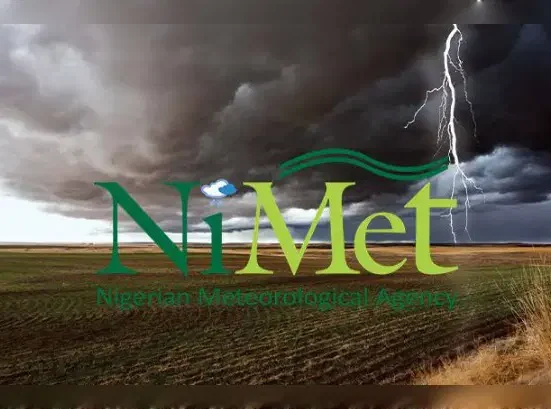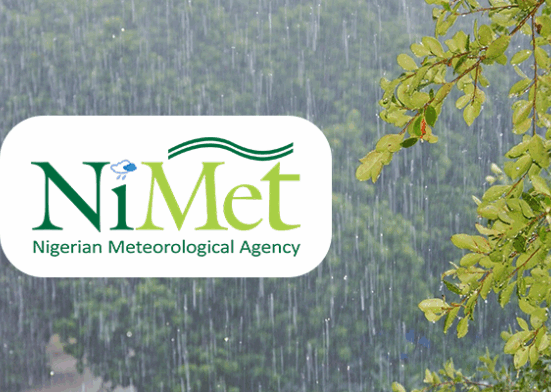Residents across Nigeria have been urged to prepare for heavy rainfall and thunderstorms as the Nigerian Meteorological Agency (NiMet) has forecast a wave of significant weather conditions expected to sweep through the country between Wednesday and Friday.
In its weather outlook released on Tuesday from its headquarters in Abuja, NiMet disclosed that varying degrees of rainfall, coupled with thunderstorms and strong winds, are likely to affect many parts of the country. The agency attributed the anticipated weather conditions to seasonal atmospheric activities typically experienced during this period in the year.
For Wednesday, the forecast indicates that the northern region will witness predominantly sunny skies interspersed with patches of cloudiness. However, NiMet warns that isolated thunderstorms may occur later in the day, particularly affecting states such as Kaduna, Adamawa, Sokoto, Kebbi, Zamfara, and Taraba.
The North Central zone is expected to experience a mixture of sunshine and increased cloud cover. Thunderstorms are forecast to develop during the afternoon and evening hours in parts of the Federal Capital Territory, Benue, Plateau, Niger, Kwara, and Kogi States.
Moving further south, the agency predicts a cloudy morning across the coastal and inland parts of the Southern region, with a likelihood of localized thunderstorms affecting Delta, Cross River, Akwa Ibom, Rivers, and Bayelsa States. As the day progresses, thunderstorms are projected to spread across most parts of the South, signaling a wet and stormy afternoon and evening.
On Thursday, NiMet foresees morning thunderstorms in northern states such as Kebbi, Taraba, Borno, and Adamawa. By afternoon, the storms are expected to intensify and expand, hitting additional northern states including Sokoto, Zamfara, and Kaduna.
The North Central region will again experience cloudy skies with chances of early morning thunderstorms in places like Niger and Kwara States. As the day advances, more widespread thunderstorms are expected to develop across the region.
In the South, thunderstorm activity is forecast during the morning hours across Ogun, Edo, Delta, Bayelsa, Rivers, Cross River, Akwa Ibom, and Lagos. Later in the day, thunderstorms are anticipated to dominate most parts of the southern landscape, continuing the trend of heavy rainfall and unstable weather conditions.
By Friday, NiMet expects cloudy skies with intervals of sunshine across the North, particularly in areas such as Taraba and Adamawa during the morning. These locations, along with Borno and Kaduna States, are expected to experience thunderstorms later in the day.
In the North Central region, early morning thunderstorms may occur in Benue, while more intense thunderstorm activity is expected to spread across the entire zone as the day progresses.
The Southern region is also not left out, as cloudy skies are forecast during the morning, with thunderstorm activity likely in parts of Enugu, Imo, Awka, Cross River, Akwa Ibom, Rivers, and Bayelsa. Widespread thunderstorms are predicted to dominate the entire region by evening.
NiMet has advised members of the public to remain cautious and take preventive measures against the potential impact of severe weather. It specifically warned that strong winds may precede thunderstorms, potentially causing damage to weak structures and disrupting movement.
Airline operators have also been urged to obtain weather documentation specific to airports from NiMet to enable safe and efficient flight planning during this period of atmospheric instability.
The agency continues to encourage Nigerians to stay informed through regular weather updates accessible via its official website, www.nimet.gov.ng, or through its various public communication platforms.
With the current weather pattern indicating the peak of the rainy season in many parts of the country, vigilance and timely response to weather advisories remain critical in minimizing risks associated with storms and flash floods.






